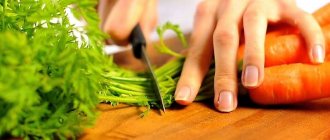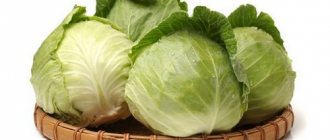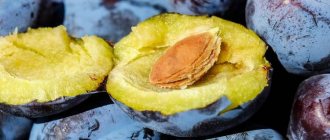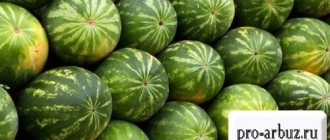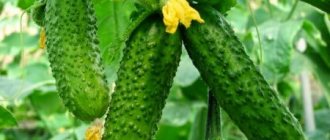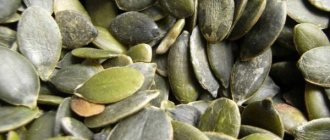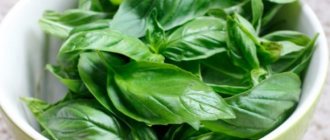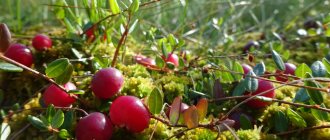Where can you use barberry berries?
The sour berries of the unpretentious shrub are used in:
- cooking;
- cosmetology;
- medicine.
Dishes using this plant are varied: sauces, jams, marshmallows, sweets, honey, juice, liqueurs and fruit drinks. Barberry sauce for meat is highly valued in many cuisines around the world. Classic pilaf also includes the use of dried barberry in its recipe.
In medicine, berries are used to strengthen the heart and blood vessels, as a choleretic agent, to improve appetite and to stop bleeding. Berries also normalize liver function and hormonal levels. For medicinal purposes, barberry is most often brewed and tea is drunk from it. Dry berries are used for this.
In cosmetology, nourishing face masks are made from milk, rolled oats and barberry. You need to keep this mask for about 20 minutes.
The low calorie content of the fruits of the shrub determines their use in nutrition for weight loss.
Properties of berries
Barberry is a medium-height shrub with small leaves and long spines on its shoots. In spring, it is densely covered with small yellow flowers, and by the end of summer, oblong, sour-tasting fruits ripen in their place.
The benefits of barberry berries for the human body are due to the substances they contain. Pectins, fruit acids, mineral salts and vitamins were isolated from the fruits. Thanks to this composition, they are able to have an extremely positive effect. The fruits of the bush can be consumed by both adults and children. The only limitation is an allergic reaction.
Barberry berries
Harvesting barberry does not present any difficulties. In autumn, the fruits are collected and delicious marshmallows, marmalade and jam are prepared. They are also dried and used as a base for savory sauces, liqueurs and tinctures. Barberry is considered a mandatory seasoning for some traditional oriental meat dishes. For example, no housewife will cook pilaf without adding purple berries.
Advice. It is best to harvest fruits late in the fall, before frost. At this time they contain the maximum amount of useful substances.
How to preserve barberry for the winter
To preserve barberry for the winter, it is dried or frozen. You can make jams, sauces and make various preparations. But when dried or frozen, the berry retains the maximum amount of vitamins and nutrients. At the same time, in winter, you can prepare any dish of your choice from preserved berries, both for an everyday dinner and for a holiday table. Each type of workpiece has its own nuances.
Freezing barberry for the winter
Any freezer is perfect for freezing barberries. To begin, the berries must be washed and dried. Then the fruits are laid out in portions in plastic bags. You cannot freeze more berries than are consumed at one time, since after defrosting you cannot re-freeze the product - it loses its properties and appearance. Instead of bags, many housewives use plastic containers.
Drying
Drying barberry fruits is the most convenient method, since the process is simple and the shelf life is long. The vitamin composition also does not differ from freshly picked berries. You can dry barberries for the winter in the fresh air, in a drying cabinet or in the oven.
The first stage of drying is preparing the fruit. They need to be sorted out, separating diseased and damaged specimens. Then wash the barberry under running water and lay it out on towels. After the berries have dried, you can start harvesting:
- When drying in a cabinet or dryer, the temperature at first should not exceed 50 °C; as soon as the fruits stop releasing juice, raise it to 60 °C.
- To dry in the fresh air, you need to cover the fruits with a fine mesh or gauze, and the berries themselves should be in the shade. You will need gauze to protect against birds and insects that want to eat the available fruits.
- Be sure to turn or mix the berries during the drying period, do this carefully so as not to crush them.
There is a simple way to check readiness: squeeze the berries in your hand. If they are ready, they do not release juice, do not choke and remain crumbly.
Contraindications to the use of barberry
You need to collect ripe fruits that are red or red-brown in color. Berries that are not yet ripe are poisonous. Barberry stimulates muscle activity. As a result of this, pregnant women are prohibited from consuming this berry. There may be a threat of miscarriage. During the period when you are lactation, you should also not eat berries.
Barberries have a calming effect. If you eat a large number of berries, there is a risk of poisoning, severe dizziness, nausea, cramps, and swelling.
It is prohibited for people who have cirrhosis of the liver to take medications that contain barberry.
Recipe for barberry sauce for the winter
This type of sauce is used most often in Indian cuisine. Lovers of rice and pilaf will like it, and it is used with poultry meat. Barberry sauce for the winter requires the following ingredients:
- 1 kg barberry;
- 250 g granulated sugar;
- to taste cinnamon, ginger and cloves.
The step-by-step recipe looks like this:
- Place the berries in a saucepan, add water and cook until soft.
- Grind the cooked fruits through a fine sieve.
- Add granulated sugar and all necessary spices.
- Boil.
- Cook until thickened, do not forget to stir.
- Pour into glass jars and cover with lids.
- Sterilize the product for 15–20 minutes, depending on the volume of the cans.
- Roll up hermetically, wrap in a blanket and let cool overnight.
Store in a basement or cellar, serve with meat. An important indicator of correct preparation is that the fruits should not darken during cooking.
Barberry with sugar for the winter
This is a recipe for jam without cooking. Suitable for hasty housewives and those who do not like heat treatment. The fruits better retain their healing properties and taste. Products for preparation: barberry and sugar in a ratio of 1:3.
Process step by step:
- Grind the fruits in any convenient way. To do this, you can use an ordinary meat grinder.
- Add granulated sugar and stir until completely dissolved.
- Place the resulting product in sterilized glass jars and seal.
This preparation should be stored in the refrigerator. The required temperature for the product is maintained there, and the barberry will last successfully all winter.
Barberry juice
Juice from the red berries of the eastern bush is a vitamin drink. It can be prepared for the winter in two ways: with and without sugar.
The ingredient for the unsweetened recipe is barberry itself. It is washed and then blanched in boiling water for just a couple of minutes. Then the soft berries are squeezed through a juicer. The juice should be poured into dry sterilized jars and rolled up.
Ingredients for sweet juice:
- barberry - 1 kg;
- 250 g sugar;
- ginger and cinnamon with cloves - optional.
Preparing the juice is simple: squeeze the juice as in the first recipe, add sugar and pour into glass jars. Then sterilize for 15–20 minutes. Roll up, turn the lids down to check the tightness and wrap with a blanket.
Barberry honey
Barberry honey is a healing product and famous throughout the planet. This product has a restorative, hemostatic, as well as antibacterial and choleretic effect.
Barberry nectar cannot be confused with others: it is golden-amber in color and has some sourness in its taste. The viscosity parameters are average. The process of crystallization of honey from barberry takes place within 2–6 months. Everything directly depends on storage conditions, as well as on the climate in the region.
Glass containers with high-quality lids are used for storage. Honey is stored at a temperature not exceeding +20 °C. Otherwise, fermentation processes will begin.
Barberry sweets
Barberry recipes for the winter, according to which marshmallows, marmalade, and jam are made from these berries, will appeal to all those with a sweet tooth, without exception.
Ingredients for jelly: a kilogram of barberry and sugar, plus 200 ml of water. Preparation:
- Rinse the berries, place in a pan (preferably enameled), add water.
- Heat until fruits soften.
- Rub through a sieve.
- Add granulated sugar and cook until required thickness.
- The hot product is poured into jars and sealed hermetically.
The berries are also used to make marshmallows. Products for treats:
- kilogram of berries;
- sugar - 800 g;
- 30 g powdered sugar;
- 300 ml of drinking water.
Step-by-step instructions for preparing marshmallows:
- Boil the berries and place in a colander to drain.
- Add half of the total sugar to the resulting broth and beat.
- Add the remaining sugar and beat again.
- Place on the stove, simmer over low heat until reduced to a characteristic consistency.
- Place in molds or simply place on a baking sheet and place in the oven to dry.
- Pull out and cut into strips, sprinkle with powder.
This recipe will appeal to those who have children. The delicacy will delight any baby.
To prepare marmalade you will need 1 kg of fruit, 750 g of sugar, 200 ml of water. The preparation algorithm is the same as for making jelly. You just need to cook it until it reaches a thicker consistency, and at the end, don’t pour it into jars, but cool it and cut it into cubes. The product looks great if sprinkled with powdered sugar.
How to determine if the berries are ripe
The berries need to be picked when they have acquired a red tint, become hard and elastic. Those fruits that are already overripe will have a dark red tint, will be quite soft, and are easy to crush.
Barberry Thunberg is the most popular species among those who grow this berry, but it is not eaten. The fruits themselves can be eaten, but they have no taste or sourness.
There are certain species that can be added to the dish: Dulcis, Atropurpuera. Asperma and so on. Amur, spherical and Canadian barberries are edible.
Terms and conditions of storage
Any preparations for the winter have identical storage conditions. You need a cool temperature, but without frost, and a dark room. Preserved barberry, be it sauce or jam, does not tolerate direct sunlight. For dried berries, any access to moisture is contraindicated. The optimal storage conditions in this case are a fabric bag.
A dry cellar without moisture and mold, as well as an unheated pantry, are best suited for storing workpieces in winter. If the jars are on the balcony, then the temperature should not drop below 0 degrees.
Properties of barberry and its medicinal effect
Back in the days of Ancient Greece, barberry was used as a medicine to cure the liver, kidneys, and gastrointestinal tract. Barberry is used to make tinctures from the leaves of the berry. This remedy is anti-inflammatory. Alkaloids and berbenes are found in the roots, bark and leaves of barberry. This helps moderate your heart rate and lower your blood pressure.
A tincture is made from barberry, which helps when bleeding, inflammation, colds or fever begin. When you have gastritis, you also take berry tincture. The juice has an antimicrobial and antipyretic effect.
The fruits can be used to remove toxins and cleanse the body, and also slow down the aging process.
In pharmacies you can find a tincture made from alcohol. Doctors recommend it when you have hepatitis, uterine bleeding, or cholelithiasis. Berberine tablets are produced based on this tincture.
Also, barberry is used in the cosmetology field, in the form of all sorts of decoctions and tinctures, and they also make masks.
Barberry can be added to any dish. For example, to prepare Uzbek pilaf, you need to add a little barberry. The berries are used to make liqueur, candies, wine, various jams; you can make jam, syrup, and so on at home. Also, barberry can be used as a seasoning.
Storing barberry not in dried form
Barberry berries can not only be dried. There are several more methods that housewives often prefer:
- freezing;
- in glass containers in ground form;
- preparations in the form of jam, jelly, marshmallows, jams, compotes and other things.
Everyone, having chosen the most suitable method for themselves, must remember that observing all the subtleties is an important point that will keep the barberry in a suitable condition for as long as possible.
Lyudmila Filatkina in her video talks about the beneficial properties and how you can use the berries of barberry and chokeberry (chokeberry).
Perhaps these simple recipes were not previously known to you. Tweet
Can barberry be cut? Barberry: basic care
Barberry is one of the brightest representatives of unpretentious and long-lived shrubs that can not only bear tasty fruits, but also take part in the landscape design of a suburban area.
They are distinguished by straight, thorny branches. In some varieties, the spines grow to a centimeter size. The branches of a young plant are thin and the bush has a loose constitution, but in just a couple of years it will grow so large and “woody” that it will become an absolutely impassable barrier.
An adult barberry can reach a height of three meters, but in the group there are varieties that do not grow above 30. The shrub is easy to trim and this made it not only the best choice for a hedge, but also for embodying topiary ideas.
This is greatly facilitated by the wide color palette of the plant. Barberry can be yellow-red, violet-blue or red-green. By combining the color varieties of barberry with other types of shrubs, you can get simply luxurious compositions. In this case, barberry can act as both the main background and an accent zone.
Dwarf varieties are used to decorate the perimeter of flower beds. The bush will do an excellent job of protecting flowers and grass growing on them from trampling. Sometimes owners fence holes around trees with a barberry fence. It turns out to be a very picturesque picture.
When planting barberry as a hedge, you can care for it in different ways. Some people prefer to leave the bushes in their original form, while others are impressed by beautifully trimmed “fences”. Barberries with erect branches manage to keep their shape best. It is not difficult for them to form rounded compositions.
Rules for planting barberry
The most important thing when planting a barberry bush is not to plant it near groundwater. The plant does not tolerate excess moisture, so seedlings are not planted in lowlands. The land for planting should be well drained and, of course, fertile. If your site has excessively acidic soil, then it will have to be limed; moreover, you will need to add a little sand to each prepared planting hole. This will increase aeration.
Does not like barberry and dense shade. In such an environment, the bush will lose its unusual color and will not bear fruit, so give the plant a well-lit area of the territory.
Growing any plant requires some effort, and barberry, for all its unpretentiousness, will be no exception. There will be no special requirements, but some points are also important for him.
How to get a seedling
“It’s better for a novice gardener to buy a strong seedling, because fiddling with the seeds will take a lot of time and may not give the expected results.”
Cuttings and seeds are suitable for obtaining seedlings. You can propagate bushes by division and layering. It is better for a novice gardener to buy a strong seedling, because fiddling with the seeds will take a lot of time and may not give the expected results.
To propagate by cuttings, carefully cut off the desired part of the bush and plant it in the ground or pot. Then the planting will need to be watered regularly and wait for the roots to appear. If the seedling grew in a flowerpot, then when transferring it to open ground, you should not pick it out of the potting soil, so as not to damage the fragile roots. To propagate by layering, the shoot must be pinned and covered with earth. The soil in this place is moistened, stimulating the cuttings to start running horses.
The most convenient way to grow barberry thickets is by dividing the bush. The plant is dug up and divided into parts. Each newly formed bush is returned to the ground. Barberry easily tolerates this procedure, takes root well and quickly begins to bear fruit.
The plant is not particularly demanding in terms of soil, but yes, in terms of location. It needs to be planted in the sun, or at least in partial shade. A planting hole with a volume of half a cubic meter is prepared for a single bush. For hedges, it is more profitable to dig a trench rather than holes. Drainage is arranged in the prepared area, the soil is well moistened and fertilizers are mixed into it.
Suitable:
1. Peat.
2. Humus.
3. Superphosphate.
Is it possible to eat barberry? Answers:
Unfortunately no. The fruits of decorative barberry species are not suitable for food. Only the fruits of the common barberry are edible. I was interested in this question myself.
Although four years have already passed, maybe this will be useful for someone: Darwin’s barberry is still edible
| Anetka M Yes, you were answered correctly above. I'll attach photos here. Edible fruits of the common barberry - Berberis vulgaris - A branched shrub up to 1.5 m tall with erect, brownish-gray shoots - numerous bright red fruits up to 1.2 cm long decorate the plants for a long time. Similar to it is Canadian barberry - B. canadensis Mill. Shrub up to 2 m tall. Its fruits are larger than ordinary ones and are light red. But the fruits of the Thunberg barberry - Berberis thunbergii., whose multi-colored varieties have appeared on sale in abundance, do not have such properties. The fruits of this type of barberry are bitter, as they contain a lot of alkaloids, and are not suitable for food, but they are an excellent food for birds that winter with us. Spines up to 1 cm long, simple, thin and elastic. The leaves are small (1-3 cm) with horizontally extending, densely branching shoots. The coral-red fruits can even be poisonous. There is another evergreen Juliana barberry (Berberis julianae) which has oblong, blue-black, inedible fruits. We have several types of barberry growing in our dacha, we have been looking for the edible one for a long time, for some reason we have a problem with them. Anonymous (asker) October 19, 2015 Thanks for the photos, Anechka, in my neighboring park there is one like the one in the last photo. only the berries are not black, but red. They might still turn black. But I managed to collect... I'll go throw it away. Anetka M (answer author) October 19, 2015 It’s better to throw it away, of course, if in doubt. We have the one in the first photo growing, and the bush at the dacha is not very picky. It is better to plant a proven option in the spring. |
When to collect barberry
Fruits should be picked only when they are ripe - green berries can cause poisoning. Harvesting times depend on the growing area and variety.
This unpretentious shrub has very high healing qualities, which is why there are so many recipes for barberry preparations for the winter. Some people, without bothering too much, simply dry all parts of this plant, others try to pamper themselves and their loved ones with various delicacies brewed from the berries of this plant.
Our story today will be of interest specifically to gourmets and gourmets, since the barberry preparations we reviewed will be sweet or spicy.
Treatment with barberry honey - folk recipes
By processing nectar from common barberry flowers, bees collect barberry honey. It has a golden color, a pleasant smell and a delicate sweet taste.
Barberry honey is used to stop bleeding (including internal), in the treatment of pathologies of the digestive tract, for kidney stones and thrombosis. For gastritis with high acidity:
Dissolve 1 tablespoon of barberry honey in a glass of fresh potato juice. Drink 1/2 glass 2-3 times a day half an hour to an hour before meals. The course of treatment is 10 days, followed by a 10-day break, after which the course can be repeated.
For gastritis with high acidity, as well as to restore normal intestinal motility, for constipation and primary hypertension:
Boil 10 g of ground walnut kernels in 200 ml of milk. Then strain, add 1 dessert spoon of barberry honey. The resulting mixture is consumed warm, a third of a glass, 3 times a day, for 15-20 minutes. before eating.
For abdominal pain
pour 200 ml of boiling water over 1 tablespoon of black elderberry leaves, leave for 2 hours, then strain. Drink a quarter glass 3-4 times a day, 20 minutes in advance. before meals, with the addition of a small amount of barberry honey. Another recipe: dilute 1 teaspoon of honey in 100 ml of cucumber juice. Drink within 20 minutes. before meals.
With increased gas formation
(flatulence): pour 1 tablespoon of dill seeds into 200 ml. boiling water, infuse, then strain and dilute 1 tablespoon of barberry honey in the resulting infusion. Drink half a glass 3 times a day.
To restore normal stomach acidity:
Boil oat grains in 1 liter of whey (the remainder after skimming off the cottage cheese) (1 part grains to 5 parts liquid). Cook in an enamel bowl over low heat for 3-4 hours. Then cool, strain, dissolve 300 g of barberry honey in the broth and add 125 ml of ethyl alcohol. Store the resulting mixture in the refrigerator, consume warm, 30 ml per 20 minutes. before eating. Shake before use. This mixture can be used for no more than three weeks.
For stomach ulcers, mix the following ingredients:
- 10 eggs in shell;
- 1 kg butter;
- 500 g barberry honey;
- 250 ml yogurt.
Store the resulting mixture in a warm place until the egg shells dissolve. Then mix and consume 1 tablespoon 3 times a day, before meals. Use until the mixture is gone.
For uterine bleeding
A decoction of borage collected in the fall after harvesting cucumbers is useful. Rinse the herb thoroughly in cool water, then cut into small pieces. Pour 50-100 g of chopped herbs into 500 ml of cold water, bring to a boil and cook over low heat for 15-20 minutes, leave for 1 hour. Drink 100 ml 3 times a day, adding barberry honey to taste. In the first few days, uterine bleeding stops and the woman’s condition improves.
For bleeding, heavy periods.
The following ingredients are mixed in equal quantities: yarrow herb, goosefoot herb, valerian root. Pour 2 teaspoons of the resulting mixture into 200 ml of boiling water, leave for 20 minutes, strain, then dilute 1 tablespoon of barberry honey. Drink 100 ml 4 times a day.
For thrombophlebitis
Traditional medicine recommends long-term use of an infusion of nettle leaves with barberry honey. Brew 2 tablespoons of nettle leaves in 200 ml of boiling water, leave for 1 hour, strain, then dilute 1 teaspoon of honey into the infusion. Drink 3 times a day, 70-80 ml. During the course, it is necessary to observe some restrictions in the diet (refuse meat and fish, limit fried foods).
To cleanse blood vessels:
Brew 1 cup of dill seeds and 2 tablespoons of ground valerian root in 2 liters of boiling water. Infuse for 25-30 hours in a glass jar, around which a warm blanket is wrapped. Then dilute 2 cups of barberry honey in the resulting infusion until completely dissolved. Drink 1 tablespoon every 20 minutes. before meals, 3 times a day.
Author: Sorokachuk K.G. Content Project Coordinator.
How to prepare barberry leaves and roots
Not only berries are harvested, but also barberry leaves and roots.
Barberry leaves are harvested during flowering - in May and June. The leaves are cut off along with the young shoots. Then they are washed from dirt and dust and dried under a canopy at a temperature not exceeding 50 degrees.
The roots of the plant are harvested twice a year: in April and October. It is important that the shrub is at rest when digging up the roots. Dig up no more than ⅓ of the entire root system so that the plant does not die. Roots are harvested from one bush no more than once every 10 years.
The collected roots are cleared of soil, cut into cm-long pieces and dried under a canopy at a temperature of 50 degrees. Store raw materials in a ventilated area in paper or fabric bags for 2 years.
